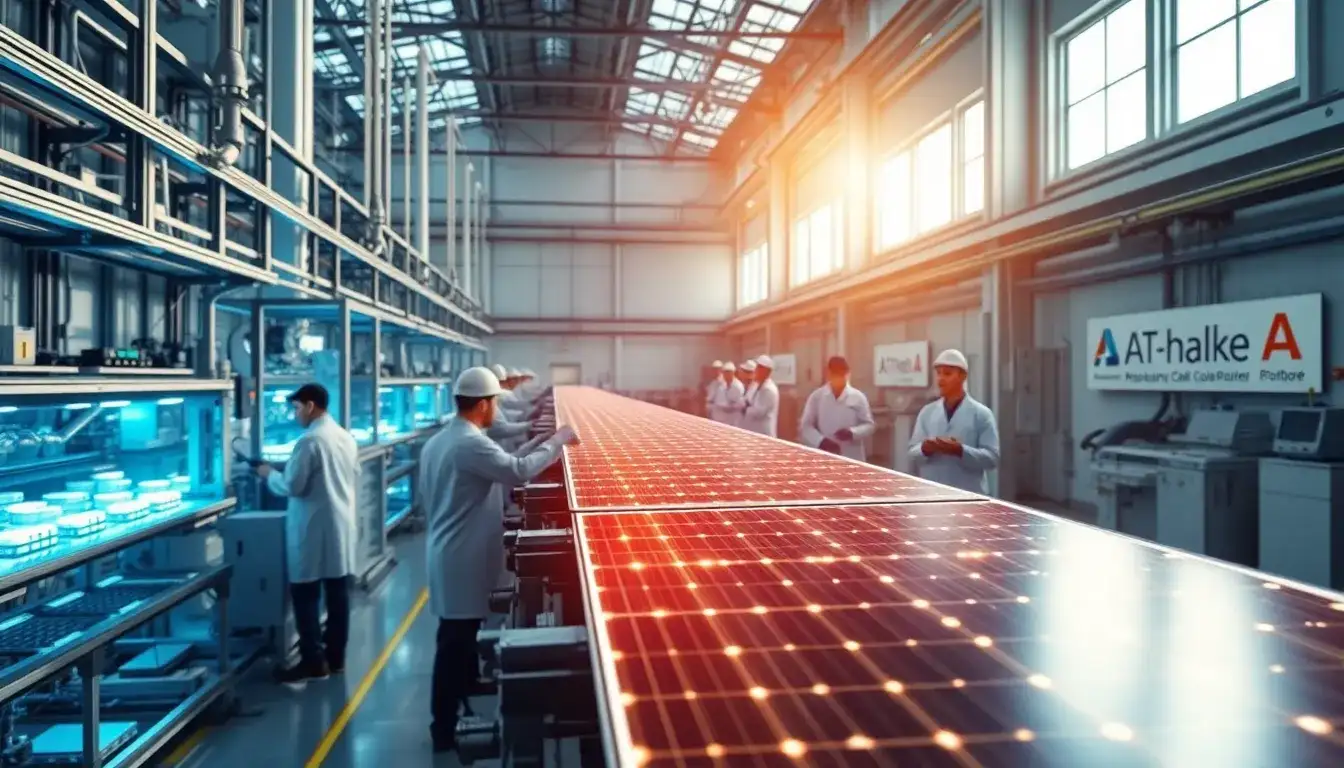
Perovskite Solar Cell Industry Accelerating Towards Commercialization
Recent advancements in the field of perovskite solar cells have been promising. The Clean Energy Materials and Devices team from the School of Materials Science at East China University of Science and Technology recently published their latest research in Science. This study unveiled the key mechanism behind the instability of perovskite photovoltaics—the photomechanical-induced decomposition effect—and proposed a new method using graphene-polymer to enhance the mechanical properties of perovskite materials. The industry widely believes that this breakthrough will offer innovative solutions for the commercial application of perovskite solar cells.
Broad Development Prospects
Compared to traditional crystalline silicon cells, perovskite solar cells boast advantages such as high conversion efficiency, lower costs, and lightweight structures, making them a promising new photovoltaic technology. However, the instability of these devices remains the primary challenge hindering their commercialization. Efforts to enhance the stability of perovskite materials have included designing surface molecular structures, but these approaches have not yet met practical application requirements.
According to reports, the solar cells developed by the East China University research team maintained 97% of their power generation efficiency even after operating continuously for 3,670 hours (approximately 153 days) in simulated high-light and high-temperature conditions.
Industry experts consider perovskite batteries to be the next generation of photovoltaic technology. This recent technological breakthrough significantly improves the stability of these cells under high light and temperature conditions, laying a solid foundation for large-scale commercial applications. During this year’s National People’s Congress, several representatives expressed keen interest in the perovskite industry.
Key Industry Insights
Wang Gang, a representative and chairman of Jinjing Group, stated in an interview with The Securities Daily, “We are on the brink of the third technological revolution in the photovoltaic industry.” He emphasized that the flexibility and low-light power generation capabilities of perovskite batteries enable their widespread application in building-integrated photovoltaics (BIPV) and distributed solar energy systems. Including the perovskite photovoltaic industry chain in national and provincial “14th Five-Year” plans is crucial for consolidating China’s leadership in the global green energy sector.
Gao Jifan, chairman of Trina Solar, noted that over the next five years, the photovoltaic industry will primarily focus on TOPCon technology, with HJT and BC technologies serving as complementary solutions. The combination of these technologies with perovskite battery stacking techniques is expected to further enhance the efficiency, lifecycle, and competitiveness of photovoltaic cells.
Challenges in Stability
Due to the promising outlook for perovskite solar cells, several publicly listed companies have begun to invest in the related industry chain. China National Nuclear Power Co., Ltd. established China Nuclear Power Optoelectronics Technology (Shanghai) Co., Ltd. in 2023, focusing on the research and manufacturing of perovskite solar cell technology. The company’s large-sized perovskite rigid and flexible products have achieved industry-leading technical specifications and commercial-grade products have been officially launched.
BOE Technology Group announced in November 2023 the initiation of a perovskite photovoltaic project and plans to establish a wholly-owned subsidiary, Hefei BOE Optoelectronics Technology Co., Ltd., in 2024 to focus on research and commercialization of perovskite photovoltaic technology.
Wang Gang revealed that TCO conductive film glass is a core auxiliary material for perovskite cells, accounting for about 34% of the total cost. After nearly two decades of R&D investment, Jinjing Group has achieved full-chain autonomy from equipment manufacturing to product design and mass production, overcoming technical bottlenecks related to uniformity in large-sized coatings, high conductivity, high mobility, high light transmittance, and low resistance.
In 2023, Jinjing Group’s third TCO glass production line began operations, with an annual capacity exceeding 45 million square meters, increasing the domestic production rate of core materials for perovskite solar cells to over 95%. The company has successfully partnered with leading domestic and international perovskite photovoltaic enterprises.
Additionally, numerous companies, including CATL and Tongwei Co., have actively engaged in the research and production of perovskite batteries.
Future Directions
According to Zhang Yue, chairman of Beijing Aoyou International Cultural Media Co., Ltd., “Current research progress indicates that perovskite solar cells could become a significant component of the future photovoltaic industry.” However, challenges such as stability, large-scale production, cycle life, process consistency, and costs still need to be addressed. Zhang suggests strengthening foundational research to enhance the performance and stability of perovskite solar cells, alongside promoting process optimization and scaling up production to reduce costs.
Gao Jifan pointed out that the stability of perovskite cells remains a critical challenge. Trina Solar is collaborating with global universities through the National Key Laboratory of Photovoltaic Science and Technology to advance foundational, cutting-edge, and specialized research in new photovoltaic technologies.







